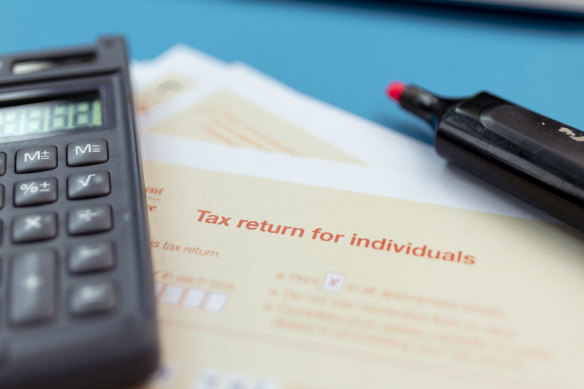- Updated
- Politics
- Federal
- Income tax
End bracket creep and move to the bush: Westpac’s productivity plan
By Shane Wright and Millie Muroi
The nation’s second-largest bank has backed increasing personal income tax thresholds annually in line with inflation and encouraging 1 million people to move to a handful of regional centres to help boost living standards and the economy.
Westpac, in a submission to Prime Minister Anthony Albanese’s three-day economic roundtable next month, also urged a focus on making it easier to build homes, give more power to states to fast-track approvals for renewables and simplify business regulation.

Westpac has argued it is time to end bracket creep by indexing tax thresholds to inflation.Credit: Dominic Lorrimer
The roundtable that runs from August 19 is being used by the government to develop ideas to lift Australia’s stagnating productivity rate, which has slowed to its lowest rate in six decades and cost workers tens of thousands in lost earnings.
Westpac’s plan came as the International Monetary Fund forecast Australia’s economy would be one of the fastest growing of any rich nation over the next two years unless it is dragged down by inflation.
Business groups are largely pushing for lower company tax rates but Westpac, like the Commonwealth Bank in its submission, has looked at other parts of the tax system for immediate reform.
It says current thresholds should be increased by 2.5 per cent every year, the mid-point of the Reserve Bank’s inflation target, in a move that would cost the government almost $4 billion in its first year and grow to more $10 billion within a decade.
It said while this could cost the budget, the current system relied on “periodic, ad hoc tax cuts to avoid the share of household income going to tax inexorably rising”.
“Reducing the need for these periodic realignments also increases certainty and reduces the risk that a large tax cut will occur at the wrong time in the economic cycle,” it said.
The bank also argued that a broader review of the tax system by Treasury was needed, suggesting it canvass stamp duties, capital gains tax concessions and company taxes.
In one of the boldest proposals put to the roundtable, the bank said the government should encourage up to 1 million people to move to regional areas by 2032.
Arguing that centres with a population of between 100,000 and 1 million residents were an economic “sweet-spot”, it said encouraging more people to the bush would take pressure off existing centres while giving a boost to the economics of regional cities.
It identified Geelong and Warrnambool–Portland in Victoria, Wagga Wagga in NSW, Townsville and Toowoomba in Queensland and Bunbury–Busselton in Western Australia as potential candidates.
Westpac chief executive Anthony Miller said businesses had to do more than just complain about slow productivity.
“It is incumbent upon the private sector and regulators to work with the government, providing specific, actionable, and achievable proposals to drive productivity gains,” he said.
“That’s what this submission is about. Complaining about ‘red tape’ is not sufficient.”
Building more homes in these centres and other parts of the country could be encouraged by overhauling state planning systems to a default “deemed approval” setting for new properties, the use of AI to streamline approvals and the deferral of upfront development costs.
Energy generation and storage targets should be set for all states which would have more power to approval new power projects.
In its closely watched update on the state of the global economy released overnight, the IMF lifted its forecasts for the Australian economy for this year and next, despite the ongoing risks posed by US President Donald Trump’s tariff agenda.
On Tuesday, Trump floated a “rest of the world” tariff rate, which is likely to include Australia, of up to 20 per cent.
The IMF is tipping Australian GDP to expand by 1.8 per cent this year and 2.2 per cent in 2026, an increase of 0.2 and 0.1 percentage points respectively on the fund’s April forecasts.
Australia’s forecast growth rate puts it above comparable nations including Canada, France and the United States, supported by a better-than-expected outlook for China, which had been forecast earlier in the year to suffer from Trump’s trade wars.
The fund’s chief economist, Pierre-Olivier Gourinchas, said while the resilience of the global economy was welcome, it was tenuous.
“While the trade shock could turn out to be less severe than initially feared, it is still sizeable and evidence is mounting that it is hurting the global economy,” he said.
“At around 3 per cent, global growth remains disappointingly below the pre-COVID average.”
Gourinchas said the fund’s forecasts were beholden to upcoming tariff announcements by the Trump administration and any reciprocal tariffs.
He also warned that global interest rates could unexpectedly push higher if the independence of central banks was undermined.
Cut through the noise of federal politics with news, views and expert analysis. Subscribers can sign up to our weekly Inside Politics newsletter.